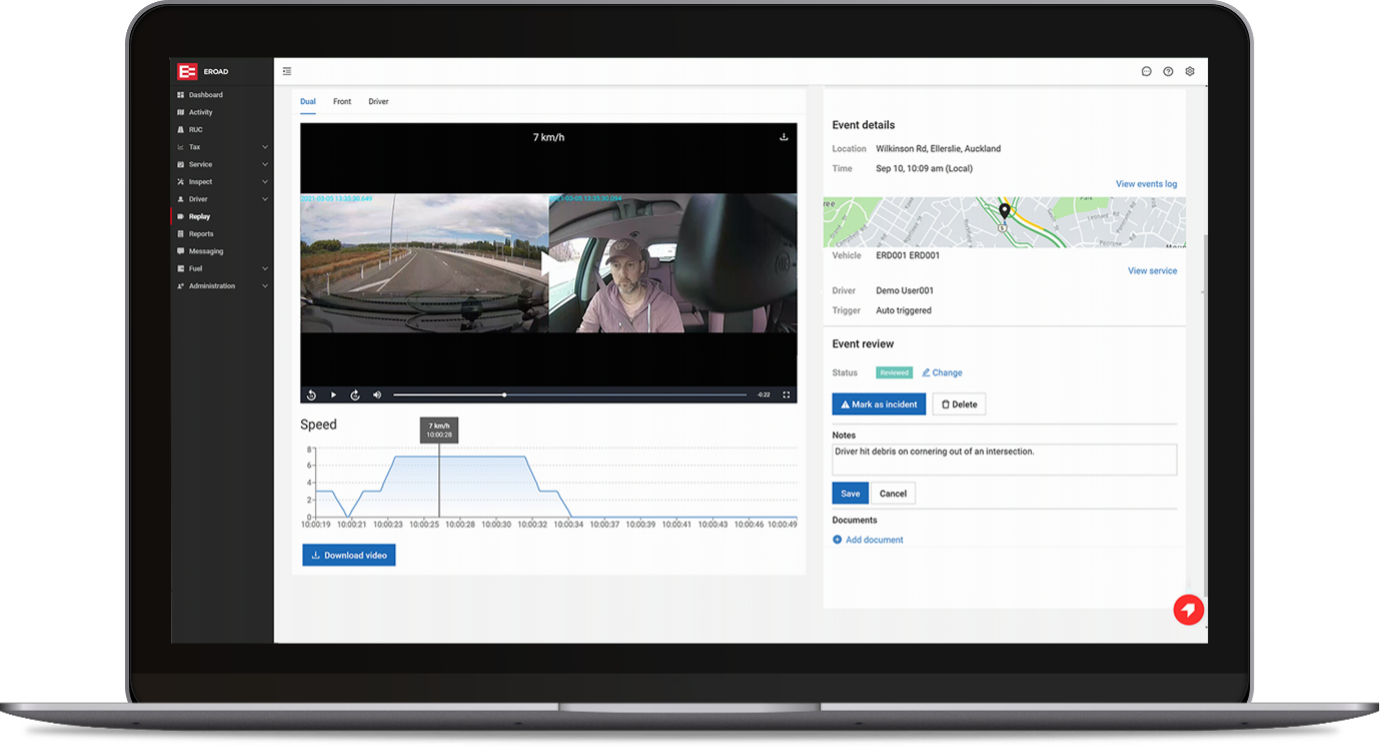Are you still relying on eyewitness testimony?
Are you still relying on eyewitness testimony?
Have you ever considered what you’d do if one of your fleet vehicles was involved in an accident or incident, or received a complaint from the public? If you plan to rely solely on a driver or eyewitness version of what happened, this could put both you and your business’ reputation in a tough spot.
Even the best drivers out there can get hazy on the details when they’re involved in an accident. People are unable to retrieve roughly 50% of information one hour after they’ve seen or heard it, and those memories can be easily distorted.
Confidence shouldn’t be mistaken for accuracy
Research into the memory of traumatic events has shown weak or negative correlation between a person’s confidence in the accuracy of their memory and the actual accuracy of that memory. Furthermore while stress can lead to more strongly encoded memories, high levels of stress can actually result in reduced memory for an event. Even if your driver is confident they know what they saw, memory isn’t a video recorder.
Reduce time spent on investigations
Investigating based on hearsay is not only unreliable, it can also take up a significant amount of time. While Australia has a relatively low level of litigation because of road accidents when compared with countries like the USA, that doesn’t stop parties from disagreeing on the facts of what happened. Fleet managers often find themselves caught up in interviews and exchanges with the driver, the third party, the insurance company and the police.
Accidents happen on our roads every day. One of the best ways to protect innocent drivers from false claims, and safeguard your time, is to install telematics like EROAD’s 4G Ehubo or connected dashcams like EROAD Clarity Solo.
How can telematics speed up accident investigation?
Technology can help ensure you’re dealing in facts, not hearsay or distorted memories. High quality dashcam video footage, paired with accurate telematics data can provide evidence that can’t be argued with when completing accident investigations. Depending on the hardware you have, some of the data you can retrieve and use as evidence includes:
- Harsh driving behaviour events detected (hard braking or harsh acceleration)
- Vehicle’s GPS location & time of the accident
- Speed of travel at the time
- Journey details leading up to the accident
- Logbook/driver hours at the time
- Quality video footage of the road & number plates of other vehicles
- Footage of the driver/inside the vehicle

Why quality matters when it comes to dashcams
And just like relying on memory, some off-the-shelf dashcams can leave you hazy on the details. Due to the lower resolution footage, it can be hard to determine things like number plates. Take a look at this example, where a driver has had an accident, the other vehicle drove off but the low-quality dashcam footage means the other vehicle isn’t identifiable.

Don’t leave it to chance – be prepared for anything to happen on the road
EROAD’s Clarity dashcam range records footage in high-definition, so you’re more likely to be able to see the details like registration plates. Plus, it’s automatically triggered when it detects harsh driving behaviour – like when the driver slams on the brakes! No need for the driver to remember to press a button.
There are hundreds of accidents, both minor and major, on roads across Australia every day. Don’t leave it to chance and memory to determine the facts. Help protect not-at-fault drivers if one of your vehicles is involved in an accident.
Learn more about what video telematics could do for your business:
